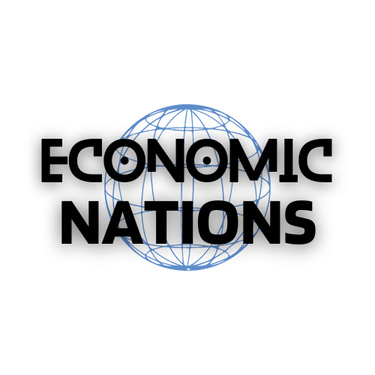The Dilemma of the Hunger Ranking in Indian context
Again a country of 140 billion plus people and the fifth biggest economy in GDP, India has been ranked poorly in the Global Hunger Index. India which is fastest growing amongst big economies, which has been a lamppost in economic recovery aftermath corona is placed on 111th position among 125 nations - a fall of four places from last year. India has vehemently rejected these findings. Is this keeping the eyes closed from the stark reality. Take a nuanced look.
EN Health and Growth Desk (With AI Input)
10/14/20234 min read


The Global Hunger Index (GHI) is a widely recognized tool that assesses and ranks countries based on their levels of hunger and undernutrition. While its mandate is noble - to highlight the gravity of hunger and malnutrition worldwide - the GHI has faced its fair share of criticism. Critics argue that it is often used to degrade the politics, policies, and morale of nations, and India, with its complex political landscape, is no exception.
The GHI: A Brief Overview
The Global Hunger Index, first introduced in 2006, is a collaboration between the International Food Policy Research Institute (IFPRI) and Welthungerhilfe, a German non-governmental organization. It employs a multidimensional approach to assess hunger, considering four main indicators:
Undernourishment: The percentage of the population with insufficient caloric intake.
Child Stunting: The proportion of children under five years old who have low height-for-age, indicating chronic malnutrition.
Child Wasting: The percentage of children under five years old who have low weight-for-height, reflecting acute malnutrition.
Child Mortality: The mortality rate among children under five.
The GHI ranks countries on a scale from 0 to 100, with a higher score indicating more severe hunger.
In response to India's ranking of 2023, the Indian authorities has said that the first three indicators used in the GHI ranking are related to health of children and cannot be the determining factors of the hunger level. The last and the most important criteria is based on an opinion poll conducted on a sample size of 3000, which cannot throw the real picture in India.
The GHI's Impact on Nations
While the GHI aims to shed light on the dire global issue of hunger, its implications for nations are often perceived negatively, especially in the realm of politics and national morale.
International Image: The GHI rankings can significantly affect a nation's international image. A low GHI score can tarnish a country's reputation and make it seem inept at addressing basic human needs. This can have repercussions in diplomatic relations, trade agreements, and foreign aid.
Economic Consequences: A poor GHI score can deter foreign investors, as hunger is often perceived as a sign of economic instability and political mismanagement. This can impact a nation's economic growth, which is a crucial aspect of its political stability.
Political Pressure: The GHI often puts pressure on governments to act swiftly to improve their rankings. While this may seem beneficial, it can lead to hasty policy decisions and a focus on short-term gains over long-term sustainable solutions. In India, for instance, this has been a major criticism, with critics arguing that policies to improve the GHI score have sometimes led to rushed implementation without considering the broader implications.
Domestic Morale: A low GHI ranking can demoralize a nation's population. It can create a sense of national shame and frustration, which may result in political unrest or disillusionment. In the case of India, this can be seen as counterproductive, as it undermines the government's ability to rally public support and implement effective policies.
The Case of India
India, as one of the world's most populous countries, frequently finds itself under the GHI's spotlight. Critics argue that the GHI has been used to target India's political and social shortcomings, often at the expense of a more nuanced understanding of the complex challenges it faces.
Complexity of the Issue: India's size, diversity, and complexity make it a unique case. While it struggles with hunger and malnutrition in certain regions, it is also a major food producer and exporter. The GHI often oversimplifies the issue by ranking the entire nation without accounting for regional variations and improvements.
Overemphasis on Rankings: The GHI's focus on rankings has sometimes led to India's policies being driven by the desire to improve its position rather than a genuine commitment to combat hunger. Critics argue that India's efforts to improve its GHI score have sometimes resulted in superficial changes, such as shifting statistics or manipulating data, rather than addressing the root causes of hunger.
Policy Impact: The GHI has influenced India's approach to nutrition and hunger, leading to various national initiatives. While some of these programs have made strides in alleviating hunger, they have not been without their share of criticism. The mid-day meal scheme, for example, has faced challenges related to quality and safety.
Challenges of Implementation: India's federal structure means that policy implementation varies significantly from state to state. The GHI often neglects these variations, leading to a one-size-fits-all approach to addressing hunger, which can be ineffective in a diverse nation like India.
Face the mirror: While it is true that the GHI has to be more accountable for countries like India, but bigger picture of undernourishment cannot be ruled out completely either. As one of the leading Indian news paper the Indian Express puts it as, "Undernutrition is one of the bleak spots of India’s development story. The National Food Security Act, 2013 made it incumbent on the state to provide basic cereals and grains to ensure that people do not go hungry. Schemes such as Poshan 2.0 seek to address the challenges of malnutrition in children, adolescent girls and pregnant women. However, technical glitches, bureaucratic hurdles, social and economic inequalities and gender discrimination prevent a large number of people from accessing these benefits."
Conclusion
The Global Hunger Index is a vital tool in raising global awareness about the issue of hunger and undernutrition. However, it is not without its flaws and controversies, particularly when applied to complex and diverse nations like India. While the GHI can be used to hold governments accountable and encourage action, it should be used with caution, recognizing its limitations and the potential negative consequences it can have on politics and national morale.
Improving the GHI's methodology to account for regional variations, addressing the challenges of implementation, and fostering a more constructive dialogue between governments and organizations like IFPRI and Welthungerhilfe is essential to ensure that the GHI serves as a catalyst for meaningful change rather than a tool for political degradation. Ultimately, the focus should be on alleviating the suffering of those affected by hunger and malnutrition, rather than solely on the rankings and their political ramifications.
Contacts
enquiry@economicnations.org
(xx) 98-11-937-xxx (On verification)
